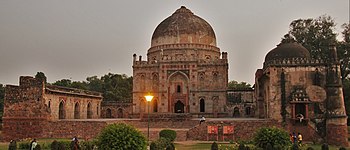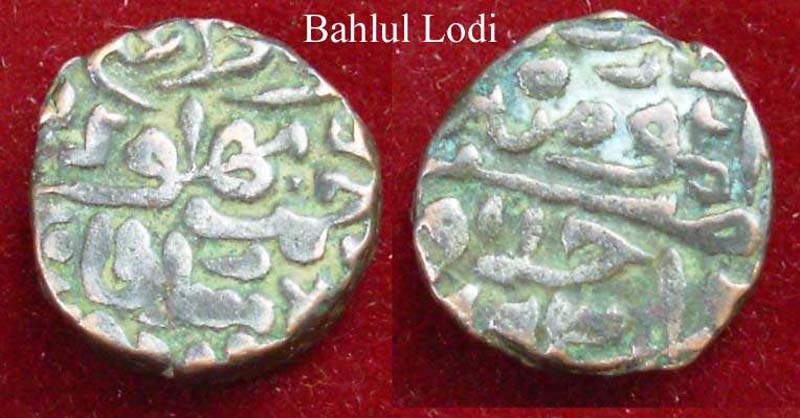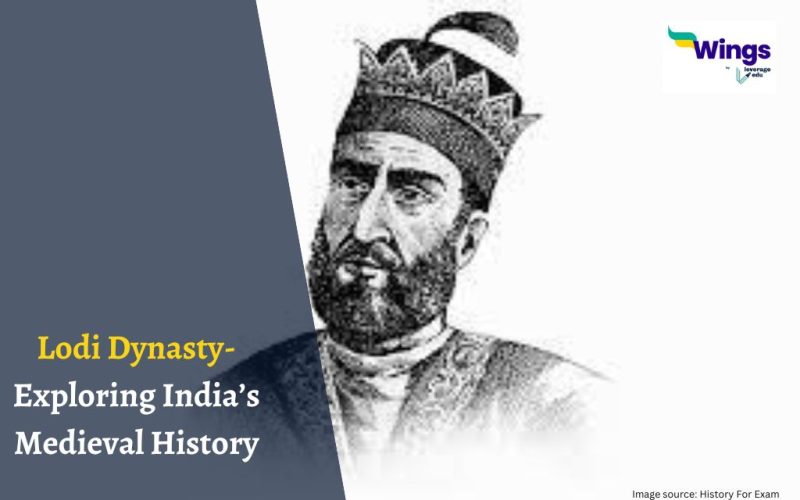The Lodi Dynasty ruled the Delhi Sultanate from 1451 to 1526. It was the fifth and the last ruling dynasty of the Sultanate. Playing an important chapter in medieval Indian history, the dynasty managed to transform the governance, architecture, and economic aspects of the region. In this blog, we will cover the history of the Lodhi dynasty, its important rulers, economy, and more. Let us delve into how it all happened.
What was the History of the Lodi Dynasty?
The Lodi dynasty was the last ruling dynasty of the Delhi Sultanate of India. It was founded by Bahlol Lodi, a member of the Afgan Gupta dynasty. Before taking over the Delhi Sultanate, Bahlul Lodi took advantage of the Sayyid dynasty’s internal rivalries and weaker position. He captured the region of Punjab followed by Delh in 1451. This expansion also included the conquest of regions like Malwa and Jaunpur. Upon ascending the throne, Bahlol adopted the title of Bahlol Shah.
Bahlul’s son Sikandar Lodi followed the footsteps of his father by further expanding the control of the empire. He succeeded his father on July 15, 1489. Moreover, it was during his reign that numerous Hindu temples were destroyed and plundered in cities like Mathura and Naga Port. Apart from this, he also imposed Jaziya on the region’s Hindu population to demonstrate Islam’s supremacy over all religions. However, his multiple efforts to conquer the Gwalior fort failed due to the mighty army of Raja Man Singh. Over the years, Sikandar managed to besiege Bihar. Moreover, he also found the modern city of Agra.
Also Read – Tughlaq Dynasty: Rulers of Delhi Sultanate
Who were the Rulers of the Lodi Dynasty?
Bahlol Lodhi
Bahlol Lodhi was the founder of the Lodi dynasty and ruled from 1451 to 1489. He was the nephew and son-in-law of Malik Sultan Shah Lodi. It was during the reign of Muhammad Shah that he was granted the ultimate position of Tarun-Bin-Sultan. During his reign, Bahlol Lodhi made several attempts to extend the geographical locations under his empire. Upon ascending the throne of Delhi on 19th April 1451, Bahlol adopted the ultimate title of Bahlol Shah. He was brave, courageous, and a competent ruler.
Sikandar Lodhi
After Bahlol, his son Sikandar Lodhi ascended the throne by adopting the title of Sikandar Shah. crowned on July 15, 1489, his reign is associated with numerous radical challenges, covering everything from founding the modern city of Agra to introducing the famous measurement unit of 30 inches called Gaz-i-Sikandari. Moreover, he is also accredited with moving the capital from Delhi to Agra.
Moreover, Sikandar Lodhi was also a renowned poet of his time who wrote magnificent works under the pen name of Gulruk. He translated Sanskrit works into Persian and was a great advocate of learning.

Ibrahim Lodhi
Ibrahim Lodhi was Sikandar’s eldest son and the last Lodi Sultan of the Delhi Sultanate. He became an intolerant and cruel sultan in 1517. Ibrahim Lodhi is associated with the assassination of his brother Jallal Khan. Moreover, he also humiliated people with prestigious titles and other court nobles. Accordingly, he had to face numerous battles and uprisings, planned to overthrow his rule. Ibrahim Lodhi lost to Rana Sanga in the battle of Khatoli which was fought in the year 1518.
Also Read – Pala Dynasty: Rise, Rulers, Administration & Decline
How was the Administration of the Lodi Dynasty?
The Lodhi Dynasty is accredited with maintaining a sound administrative system.
- Centralized powers: Their rulers such as Sikandar Lodi and Ibrahim Lodi wanted to centralize their authority. They wanted to strengthen the position of the Sultan and reduce the overall powers allotted to regional nobles and rulers.
- Revenue collection: The revenue system during the Lodi Dynasty was quite similar to the traditional land revenue system which was known as Zabt. According to this system, land revenue was collected in cash depending on the land.
- Administration: It is believed that the administrative structure of the Lodi Dynasty was similar to that of their predecessors. For instance, it included Diwan-i-Wizarat, Diwan-i-Insha, and Diwan-i-Rasalat.
- Construction works: The Lodi Dynasty was known for its construction works. Popular examples include the Agra Fort, the Grand Trunk Road, and numerous charity houses.
How was the Economy of the Lodi Dynasty?
One of the most crucial aspects of the economy under the Lodi Dynasty was that the prices of merchandise, clothes, and other commodities were cheaper than ever. Timely rainfalls also made the situation profiting for the administration as well as the common man.
In addition to this, the Sultan had also demanded his nobles and chiefs to only accept corn as rent. On the other hand, no extra money was taken from cultivators without any valid reason. However, only wealthy families could afford gold and silver.
- Agriculture: Interestingly, agriculture was the backbone of the economy even during the Lodii dynasty. While the rulers continued to collect revenue from agricultural activities, the fertile Gangetic plains provided a massive opportunity for cultivation.
- Trade: As you might have already understood, trade and commerce during the Lodi dynasty was impressive. The availability of trade routes such as the Grand Trunk Road facilitated the movement of goods across the empire. Accordingly, the empire managed to trade with neighboring regions.
- Coinage: Rulers of the Lodi dynasty issued their own coins which were recognized as the Lodi Sultanate coins. They were typically made of materials like copper and silver. Additionally, they bore inscriptions in Arabic and Persian.

The First Battle of Panipat
The first battle of Panipat was fought between the forces of Ibrahim Lodi and Babur, the founder of the Mughal Empire. This battle of 1526 was a turning point in the nation’s history. It was fought in Panipat, present-day Haryana. Upon receiving the invitation from Daulton Khan Lodhi, the then-governor of Punjab, to replace Ibrahim Lodhi, Babur made advances to capture the region.
During this time, Ibrahim Lodi was ruling the Delhi Sultanate. The battle ended with the Mughal forces of Babur defeating Ibrahim Lodhi. Interestingly, it was one of the first battles that used gunpowder firearms and artillery.
Also Read – Battle of Panipat: List of Battles, Major Events, Outcome
Decline of the Dynasty
By the time Ibrahim Lodhi ascended to the throne, things were already looking bad for the empire. Abandoned trade routes and the depletion of the treasury for the construction and maintenance of the army made the political structure a weak point. This subsequent failure in trade routes cut off all supplies from the coast to the region where the rulers resided.
Apart from this, the late rulers of the dynasty were unable to prevent external invasions. While their trade and treasury were already declining significantly, constant wars and battles for power created more tension. The Lodhi dynasty eventually ended with Ibrahim Lodhi’s death.
Relevant Blogs
| Maratha Empire (1674-1818) | Shah Jahan |
| The Vijaynagar Empire (1336-1647) AD | Pallava Dynasty |
| Khilji Dynasty (1290–1320) | Chera Dynasty |
| Morley-Minto Reforms | Chola Dynasty |
| Bengal Partition | Chalukya Dynasty |
Results
#1. Which was the last ruling dynasty of the Delhi Sultanate?
#2. Who was the founder of the Lodhi dynasty?
#3. Who relocated the capital from Delhi to Agra?
This blog was all about the Lodi Dynasty. If you want to read more such informative stuff, check out our dedicated page on famous personalities.
 One app for all your study abroad needs
One app for all your study abroad needs
















